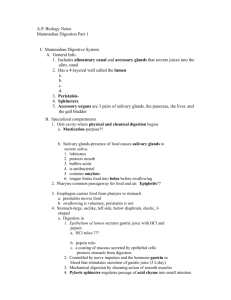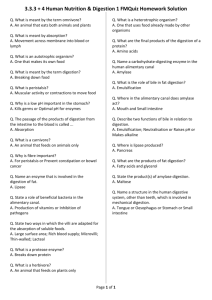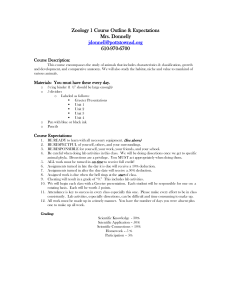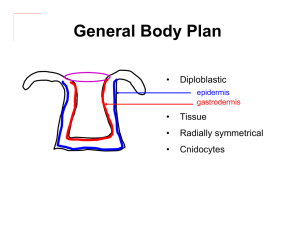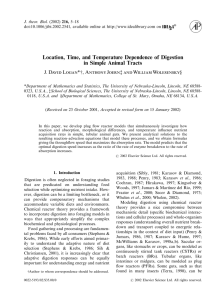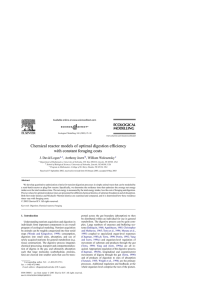Diffusion
advertisement
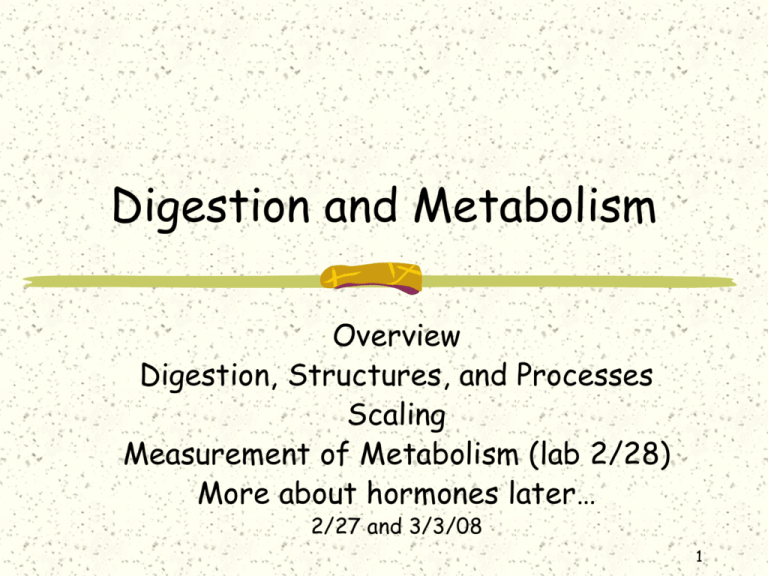
Digestion and Metabolism Overview Digestion, Structures, and Processes Scaling Measurement of Metabolism (lab 2/28) More about hormones later… 2/27 and 3/3/08 1 Overview of Digestion Assimilation – sequential processes of nutrient absorption and breakdown Egestion – expulsion of undigested food Figure 11.1 2 Feeding, Foods, and Energy (Fig 11.2) • Gross Energy (whatever is consumed) indigestible energy (feces) • Digestible Energy unmetabolizable energy (urine) • Metabolizable Energy Specific Dynamic Action (heat) • Net Energy 3 Feeding, Energy, and Processing Figure 11.3 • Role of salivary amylase beginning digestion • Continued in duodenum by pancreatic amylase and disacchridases • Note lack of interaction for cellulose 4 Feeding, Energy, and Processing Figure 11.5 • Begins in stomach with pepsin (low pH) • Additional enzymes and then dipeptidases high pH • However, some proteins transported directly into cells • endocytosis 5 Feeding, Energy, and Processing Table 11.2 6 Feeding, Energy, and Processing Figure 11.7 7 Feeding Structures Many animals have specialized mouthparts Siphons Attachment organs Tongues Radula Proboscis Beaks Jaws 9 Digestive Systems Evolutionary history: increasing anatomical and functional specialization Two-way gut One-way gut with specialized regions Figure 11.13 10 Surface Area Nutrients are hydrolyzed in the lumen of the GI tract Uptake of end products is slow Efficiency of uptake is improved by increasing surface area in two ways Increasing gut length Increasing surface undulations Figure 11.18 11 Gastrointestinal Tract Key functions and regions Mechanical breakdown of food mouth, pharynx, esophagus Acidic compartment stomach Most digestion and absorption upper or small intestines Reclamation of water lower or large intestines Release of indigestible material anus 12 Digestive Systems Figure 11.13 13 Specialized Compartments Specialized compartments increase the efficiency of digestion Compartments can vary in pH enzyme composition and types of secretive and absorptive cells Muscular valves (sphincters) control the passage of food from one compartment to the next Complexity of gut morphology varies across taxa 14 Gut Morphology Figure 11.19 15 Regulation and Enzyme Production Figure 11.27 Control of gastric secretion of acid and pepsinogen (pepsin precursor) Signals from CNS (sensory) Directly from food via mechanoreceptors (stretch) and chemoreceptors 16 Regulation and Enzyme Production (2) Figure 11.28 Control of intestinal secretion Via low pH of stomach efflux And also partially digested materials Secrete bicarbonate ion to increase pH + enzymes + bile (for fats) 17

